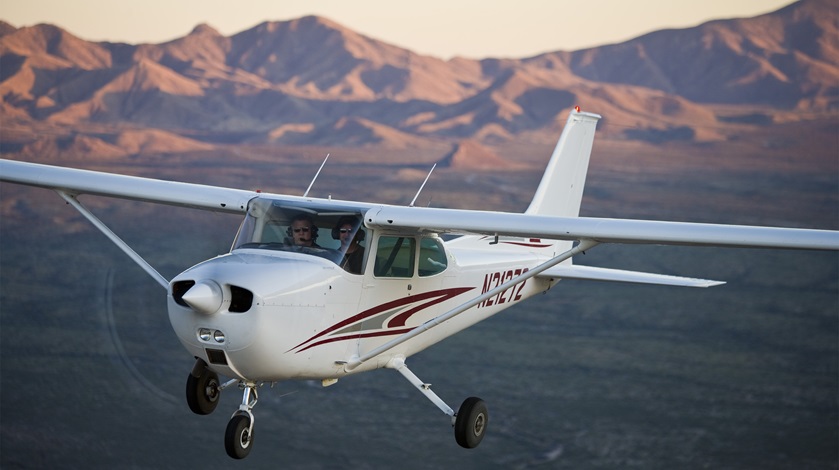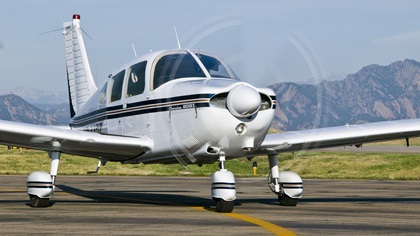Trending trainers
From headliners to holdovers, the fleet expands
The flight training universe always is a work in progress. An aspiring aviator entering our “plane” of existence in 2018, whether on a professional pilot track or to realize a lifelong self-enrichment goal, had a range of choices from traditional trainers and new arrivals to old favorites reminted as 21st-century upgrades.

The basic paths to pilothood still ruled the roost as pilots chose between high-wing and low-wing aircraft, taildraggers or “tricycles,” and chose to fly from towered airports or not; paved runways or mowed strips; and in new glass-cockpit aircraft or steam-gauged old standards.
Headline-hunting Skyhawks
The strengthening aviation economy spurred by an expectation of strong future demand for pilots not only exerted an upbeat influence on light-aircraft-manufacturing production but set up forces that kept legacy basic models flying and boosted their worth: In 2018 there was no better gauge of that spike in across-the-board demand for trainers than in a surprising increase in the value of older examples of the ubiquitous Cessna 172, still billed by its maker as the “trainer of choice.” A more contemporary version, the Skyhawk SP, also stood out as a highlight of Cessna parent company Textron Aviation’s recent new general aviation aircraft delivery figures.
But it was those older Skyhawks grabbing headlines reporting that the value of 172s produced between 1968 and 1976—chiefly those powered by four-cylinder Lycoming 150-horsepower engines known for reliability—climbed about 20 percent in just a few months in 2018. In August, AOPA reported on industry insiders crediting the spike to the strong economy, more pilots flying under BasicMed, and the demand for pilots to fill a gap created by another of aviation’s top stories of 2018: the expected professional-pilot shortage.

Piper Aircraft, another core competitor in the flight training segment, emphasized a lively focus on the flight training market in 2018, noting in July that the company was “on track to deliver more than 100 PA–28s—a combination of single engine Archers and single engine, complex trainer, Arrows. In addition to the success with Piper’s PA–28 products, sales for the twin-engine Seminole will reach their highest level in more than 15 years.”
Its main machine for training is the 180-hp, fixed-gear Archer (PA–28-181) that the company describes as “the perfect gateway to launching pilots’ flying careers all over the world.” This isn’t the PA–28-181 your grandfather took you up in back when. Piper displays the Archer on its website in the livery of the University of North Dakota’s flight training program (which says on its own website that it is replacing its Skyhawk fleet with them). New-production Archers come with an advanced Garmin G1000 avionics suite. There is also a diesel model, the Archer DX, that the company touts as an acquisition-cost leader, while also noting, “Piper continues to evolve to meet the modern pilot’s needs, while furthering the most fundamental legacy and maintaining the original intent: a passion for flying.”
Cessna, by contrast, appears to have exited that market niche, having discontinued a diesel Skyhawk in 2018, less than a year after it was certified—a decision it released in a muted announcement evidencing how the reshuffling of an enlivened light-aircraft market still cuts both ways.
Enter Vulcanair and Vashon

As the best-known players jockeyed in response to trainer-segment economics, other players made bids for market share. Italy’s Vulcanair introduced its V1.0 three-door single, already a common sight in Europe with its snappy-looking Skyhawk-like profile, to the U.S. market late in the year. Citing price competitiveness in the age of demand for pilots, it touted a vote of confidence received from a domestic flight school chain that has made a substantial purchase commitment.
In March, AOPA reported that the Vashon Ranger, a two-seat special light sport airplane presented by its Seattle-area-based manufacturer as an economical “flying jeep” with a Dynon glass panel and autopilot, was seeking out utility-mission and training markets to leverage its product’s versatility.
In another version of design versatility, Florida’s Sebring Flight Academy offers a training fleet that pivots around a technically advanced (and) light sport aircraft from the Czech Republic: The Bristell LSA. The aircraft are “equipped for commercial and IFR training with dual Garmin G3X touch 10" screens, Autopilot and ADS-B in and out, ILS,” the academy notes.
Jamie Beckett, an AOPA You Can Fly ambassador based in Florida, has his finger on the pulse of GA. He notes that he has recently seen “a rash of prospective flying clubs firing up” with the two-seat Van’s Aircraft RV–12, also an LSA that’s powered by a 100-hp Rotax 912ULS engine, “in their hangars or on their minds.”
Diamond doubles down

While manufacturers endeavored to differentiate their brand identities, some, such as Diamond Aircraft, doubled down on the virtues of “venerable” competitors: Of the 96 airplanes Diamond, of London, Ontario, Canada, delivered in the first three quarters of 2018, 31 were versions of its four-seat single-engine DA40. The DA40XLT variant is aimed at a market segment that includes private owners and “forward-looking” flight schools, Diamond says online, asserting that the airplane combines “the best qualities of its venerable predecessors, like the Cessna 172 Skyhawk and 182 Skylane.” And although not a leader in deliveries for Diamond in 2018, the T-tailed two-seat DA20 is held forth as the “lowest cost certified trainer.” The DA20-C1 “earns its stripes in worldwide high utilization flight training day in and day out,” Diamond said, adding that the airplane has been the “standard and sole” U.S. Air Force pilot candidate initial flight screening aircraft for the past decade.
Pilots reared in the long-established families of single-engine trainers have frequently been offered a path to upgrade to higher performance models, and then step up to twin-engine models with a feeling of familiarity and comfort. Piper maintains the tradition with new-production offerings of twins like the PA–34 Seneca and the aforementioned Seminole, or PA–44.
A similar route is open to the rotorcraft pilots who train in Robinson Helicopter Co.’s ubiquitous two-seat piston-engine R22 model as various helicopter flight schools offer their basic flight training graduates an upgrade package for the four-seat R44.
Whether you are a rotorcraft pilot or a fixed-wing flier, for an appreciation of a niche in aviation history it’s worthwhile to check out Robinson’s video that tells the story of how company founder Frank Robinson came to pursue his dream of developing the R22—an aircraft that would drastically cut the cost of helicopter training, and become the “template” for the company’s current line of piston and turbine models, of which 251 new-production helicopters had been delivered to customers, according to General Aviation Manufacturers Association figures, by late 2018.



